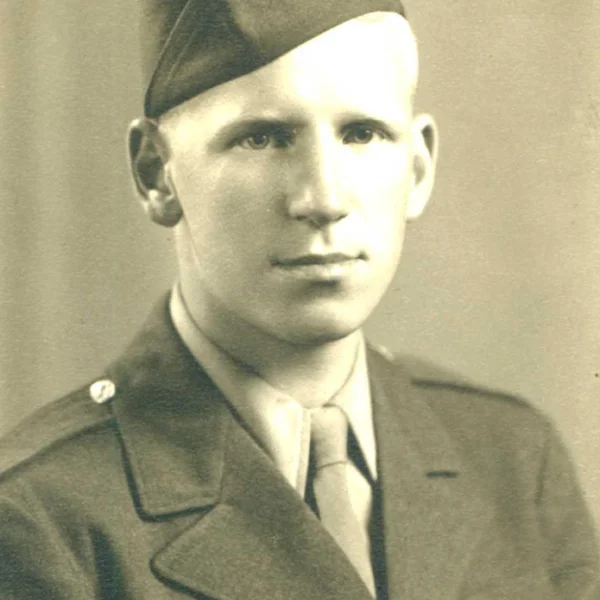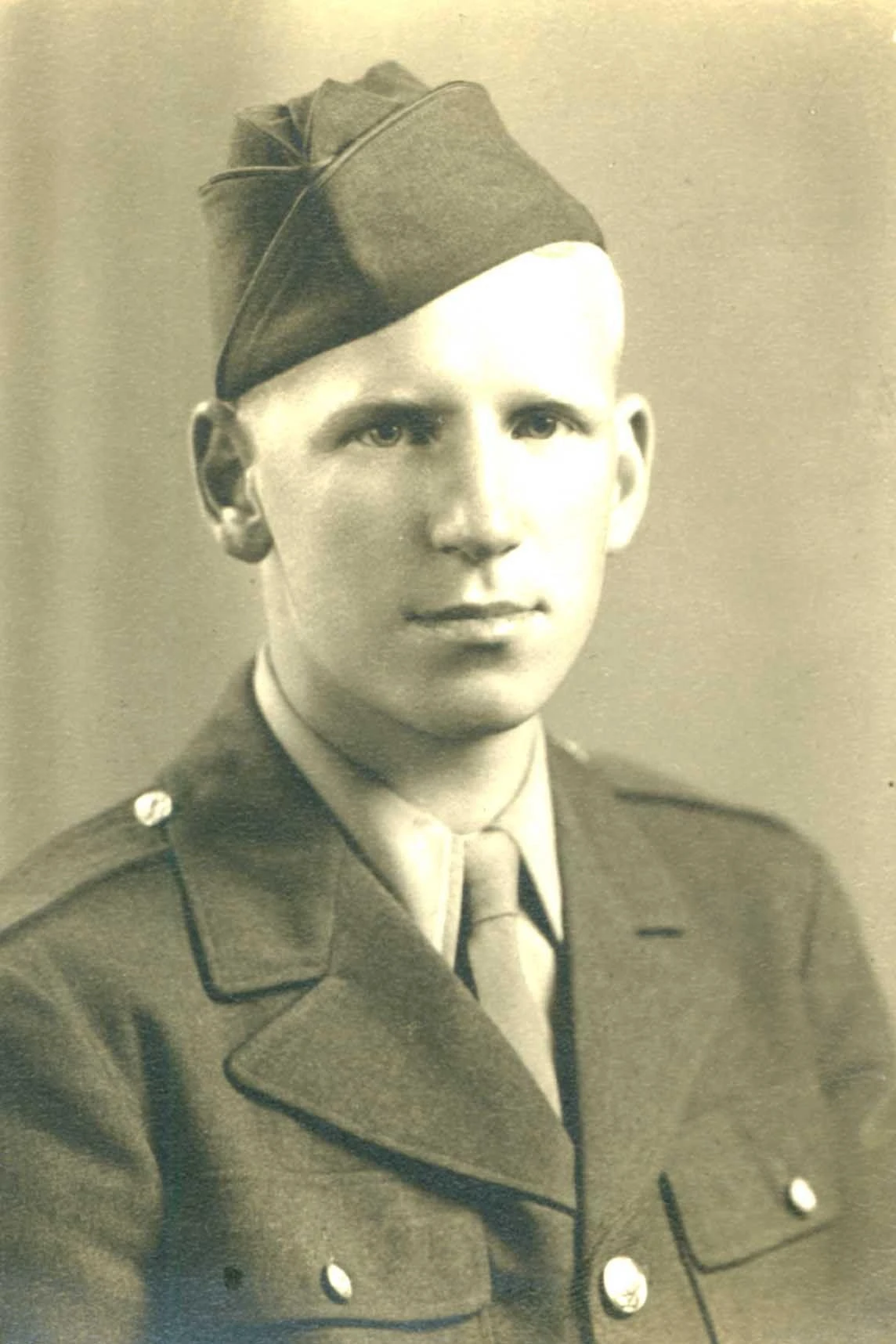In the years following World War II, the remains of tens of thousands of American war dead returned stateside for reburial in hometown cemeteries. The jubilant return of servicemen in 1945 and 1946 was followed by a second wave of coffins.
The Pantagraph reported the return of one local fallen son after another—sometimes as many as a half-dozen or more a week—well into the early 1950s. Many are buried at Park Hill Cemetery on Bloomington’s west side.
The war was over but the bodies, so many bodies, kept coming back home. Memorial Day is a fitting time to recall this often-forgotten chapter of the war.
Today, some 75 years after the fact, it’s hard to come to terms with the enormity of World War II. U.S. war dead, for instance, numbered more than 400,000.
On May 16, 1948, the body of Pvt. Harold W. Morgan was buried at Park Hill Cemetery. He attended Irving Elementary, Bloomington High and Illinois State Normal University, and worked for the Alton Railroad at the time of his induction. As a machine gunner with the Fifth Marine Division, Morgan was killed in action on March 5, 1945, at Iwo Jima.
The body of T. Sgt. Clifford A. Kwasigroh arrived in Bloomington on Aug. 3, 1948, and he was buried two days later at Park Hill Cemetery. He attended Ben Funk Consolidated School and Normal Community High School, and was a freshman at Illinois State Normal University at the time of his induction into the Army.
Kwasigroh was sent to England in May 1944 as a radioman and gunner on a B-17 Liberator. As part of the Eighth Air Force, he completed 26 missions over Germany, but was killed on Jan. 5, 1945 when his bomber collided with another Allied plane over Bury St. Edmunds, England, during a training mission. Kwasigroh was initially buried at an American cemetery in Cambridge.
Loren Deane Kane (see accompanying picture) attended Illinois State Normal University and worked in The Pantagraph’s news department before entering the Air Corps Reserves in 1942. As the radar observer in a P-61 Black Widow night fighter, he participated in 56 missions over New Guinea, the Philippines and elsewhere. On July 4, 1945, the 22-year-old airman was instantly killed in an early-morning runway crash.
Second Lt. Kane was buried in a U.S. military cemetery on Sanga-Sanga Island, Philippines, before being brought back home. On Sept. 16, 1948, he was laid to rest a final time at Park Hill Cemetery on Bloomington’s west side.
In March 1949, the bodies of brothers Sgt. Paul Johnson and Pfc. Guy S. Johnson were buried in Park Hill. Paul Johnson was killed in action on April 9, 1945, during an assault on a heavily fortified Japanese position on the island of Okinawa.
His brother was killed on Nov. 24, 1944, in Saint-Laurent, Liege, Belgium, while serving with the 15th General Hospital. His until was hit by a German V-1 “buzz bomb,” the blast throwing the bodies of hospital personnel and patients 50 to 75 feet into the air.
In late May 1949, The Pantagraph reported the return from the Mediterranean of the U.S. Army transport ship John L. McCarley that carried war dead previously buried in temporary military cemeteries in Italy and North Africa. Of the 2,554 bodies aboard, nine were returned at the request of next of kin living in Central Illinois. One of the dead was Staff Sgt. Harold P. Beitz of Bloomington, killed in Italy on Oct. 17, 1944, and buried at Park Hill on July 6, 1949.
Funeral services for Bloomington resident Marvin W. Freeman were held at Park Hill on May 26, 1949. Before the war, he was a delivery boy for Roland’s, a downtown Bloomington department store. As first pilot for the B-17 bomber “Miss Ponca City,” Freeman’s Flying Fortress was shot down over Ruhland, Germany on Sept. 12, 1944.
“We loved the boy and miss him,” read a Roland’s memorial to Freeman. “Almost unnoticed by the general public, groups of relatives and friends now gather in funeral homes over America to pay a last tribute to the boys whose remains are arriving for final burial. Sometimes the gatherings are pathetically small, so engrossed are people in today’s business and pleasure. Let us pause—and humbly try to comprehend their sublime spirit of sacrifice that led these boys through death to the undying quest of a free and peaceful world!”
The body of Corp. William Bennett “Benny” Helm was brought back in May 1952 and buried at Camp Butler National Cemetery in Springfield. Helm was working at State Farm Insurance Cos. when he enlisted in the Army Air Force in 1940. He was at Clark Field in the Philippines when the Japanese surprise attacks began on Dec. 7, 1941. Captured along with thousands of other Allied soldiers, Helm died on June 28, 1942, in a Japanese prison camp.
In October 1957, five years after Helm’s reburial, workmen breaking up some concrete at Brown’s auto parts store on the 400 block of North Main Street in Bloomington came across a bottle secreted away for posterity. Encased in concrete, the bottle held a typewritten list dated July 31, 1935. On it were 24 names associated with Nierstheimer’s, a grocery store formerly located at the site. This improvised time capsule also included a handwritten note from Benny Helm reading, “When you find this paper, look me up.”
Although Helm had died more than fifteen years earlier in a prison camp 8,000 miles from home, his family and friends could find some measure of comfort knowing he was, at the very least, back home.

